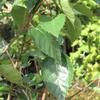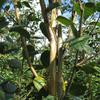Great choice! We're adding your items to the basket and working out what else you might need to plant it.
White Barked Birch Betula utilis Snow Queen
Example photos only. Size, stem height and habit may vary.
Please contact us for photos of current stock.
Select plant type
Quantity
British Grown – The British Grown logo denotes plants and trees that have been both propagated and grown in the UK. Read more
Product Description
BETULA UTILIS SNOW QUEEN – Himalayan Birch
Characteristics
There is little to differentiate Snow Queen and Betula jacquemontii other than the fact that Snow Queen displays its gleaming white bark earlier in its life. The branches are upright and the ultimate tree shape fairly pyramidal. It displays catkins in the spring and the green leaves turn buttery yellow in the autumn. It is often listed as ‘Doorenbos’. The ultimate height is approximately 15m (50ft) with a spread of 8m (25ft)
Where to Grow
It will grow in a wide range of situations but prefers full sun or partial shade and moist but well drained soil.
Did you know?
There is a wonderful collection of Himalayan Birch with a range of white shaded bark colours at the Edinburgh Botanic Gardens.
Features
-
Mature Height
- Medium - 10-15 metres
-
Spread
- 5-10 metres
-
Shape / Habit
- Pyramidal
- Spreading
-
Growth Rate
- Medium
-
Soil Type
- All soil types
-
Sun Levels
- Full sun
- Partial shade
-
Difficulty / Hard to Grow
- Easy
-
Evergreen / Deciduous
- Deciduous
-
Autumn Colour
- Yellow
-
Leaf Colour
- Green
-
Foliage
- Fine/Light leaf
- Small leaves
-
Uses
- Screening
- Parkland Tree
- Garden Tree
- Small garden Tree
- City/Urban Sites
-
Stem / Bark
- White
-
Peeling Bark
- Yes
-
Season
- Autumn
- Winter
Aftercare
Pruning Betula Utilis Snow Queen
Betula utilis Snow Queen has no special pruning requirements as it naturally forms a well-spaced pyramidal tree. You can prune out young twiggy growth to better display the bark, but otherwise keep pruning to a minimum. It is best to remove any unwanted branches sprouting from the trunk while they are young to minimise scarring.
When should I prune? Light prune during the autumn, through to mid-winter.
For the continued healthy growth of your trees, shrubs or hedging it is vital that you follow the advice below.
Watering
The main reason that plants die within 12 months of having been planted is lack of water. It is essential throughout the spring and summer, to give a heavy enough watering to enable the water to penetrate right down to the deepest root level of the tree. In hot dry spells give the equivalent of 2 bucketfuls every three days.
Weed Control
One of the most common causes of lack of water is competition from grass. When trees are first establishing, the grass roots would be at the same level as the tree roots and are far more efficient at taking up water and thus choke the tree. It is vital that for at least 3 years after planting your tree or hedge has a circle or strip one metre wide completely free of grass.
- Mulch mats are an effective way to stop grass and weeds, although they will require a careful eye to make sure they continue to work. After clearing the ground around the tree, firmly fit the mat by tucking the edges into the soil and put a thick layer of bark mulch on top of this. Be careful not to allow the woodchip to touch the stem as it can cause rot.
- Weed killer is very effective, however it is harmful to the environment. Organic weed killers usually do not kill roots. Weed killer needs to be applied each year for the first 3 years, preferably when the tree is dormant, or just once before applying a mulch mat.
- Mowing or strimming is NOT an answer to the problem. Each time you mow, the grass will grow back more vigorously and strimming invariably leads to lacerated trunks.
Staking
If trees are not correctly secured they will rock in the planting pit. Roots not firmly in contact with the soil are unable to take up moisture and nutrients, resulting in die back or death of the tree. Check, particularly after windy weather, that stakes are still solidly in the ground keeping the base of the trunk firm. The purpose of the stakes is to anchor the roots. Flexing in the wind, higher up the trunk, is not necessarily a problem if the roots are firm.
Bellow is list of the correct system to use to secure your trees.
- 40/60, 60/80, 80/100 whips - Unless rabbit/deer problem no need to stake.
- 100/125, 125/150 1.2m Cane and Easi tie.
- 150/175 1.2m square stake and a buckle tie and spacer.
- 175/250, 6/8, 8/10 15L 1.65 Tree stake and a buckle tie and spacer.
- All larger trees. 2 x 1.65 Tree stake and cross rail with 38mm cushion spacer and 1m of 38mm strapping.
Ties
Always use our recommended tree ties or strapping. These are designed and manufactured with the correct amount of give to hold the tree firm without strangling it. They should be checked at the end of each growing season for adjustment as the trunk thickens. Non proprietary materials such as baler twine will cut into the bark and should not be used.
Protection from Animal Damage
Rabbits, deer, sheep, cattle and horses can all potentially damage trees. Ask us for advice on the most appropriate guards for your trees or hedge. Squirrels are also a terrible pest when trees get to about 20ft tall but there is no protection available.
Are the delivery costs the same no matter how many plants I order?
Yes the delivery costs stay the same no matter how many plants you have on your order. They are worked out based on your distance from our nursery and can be found here.



